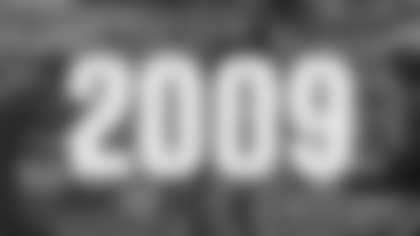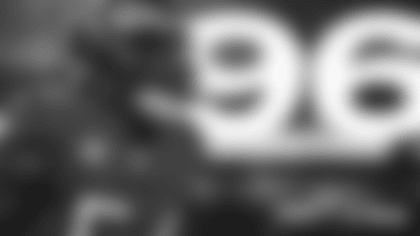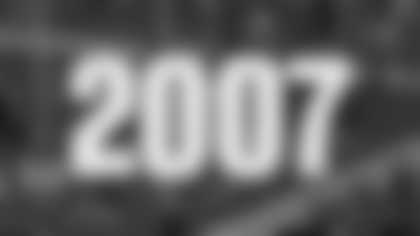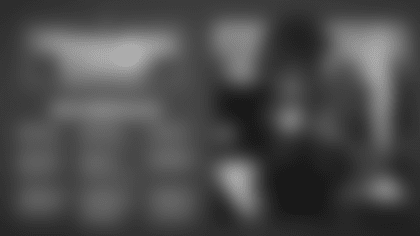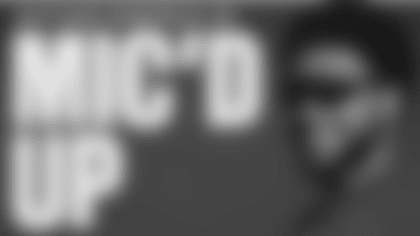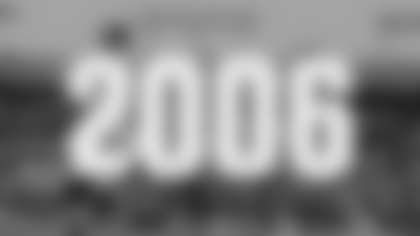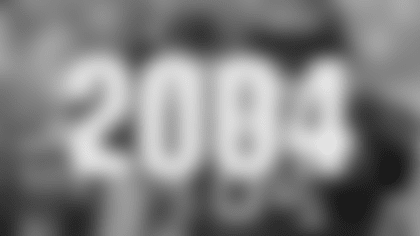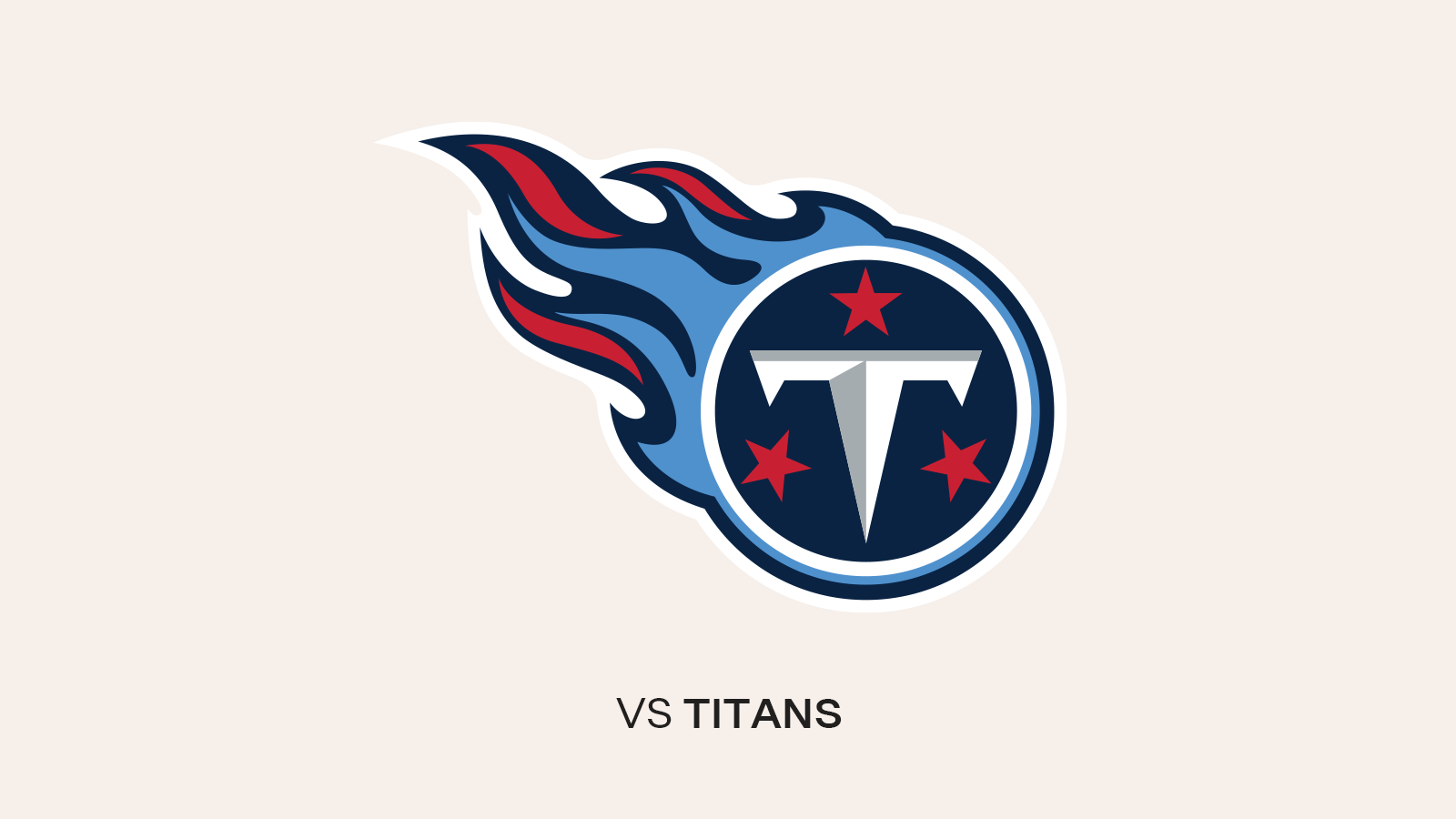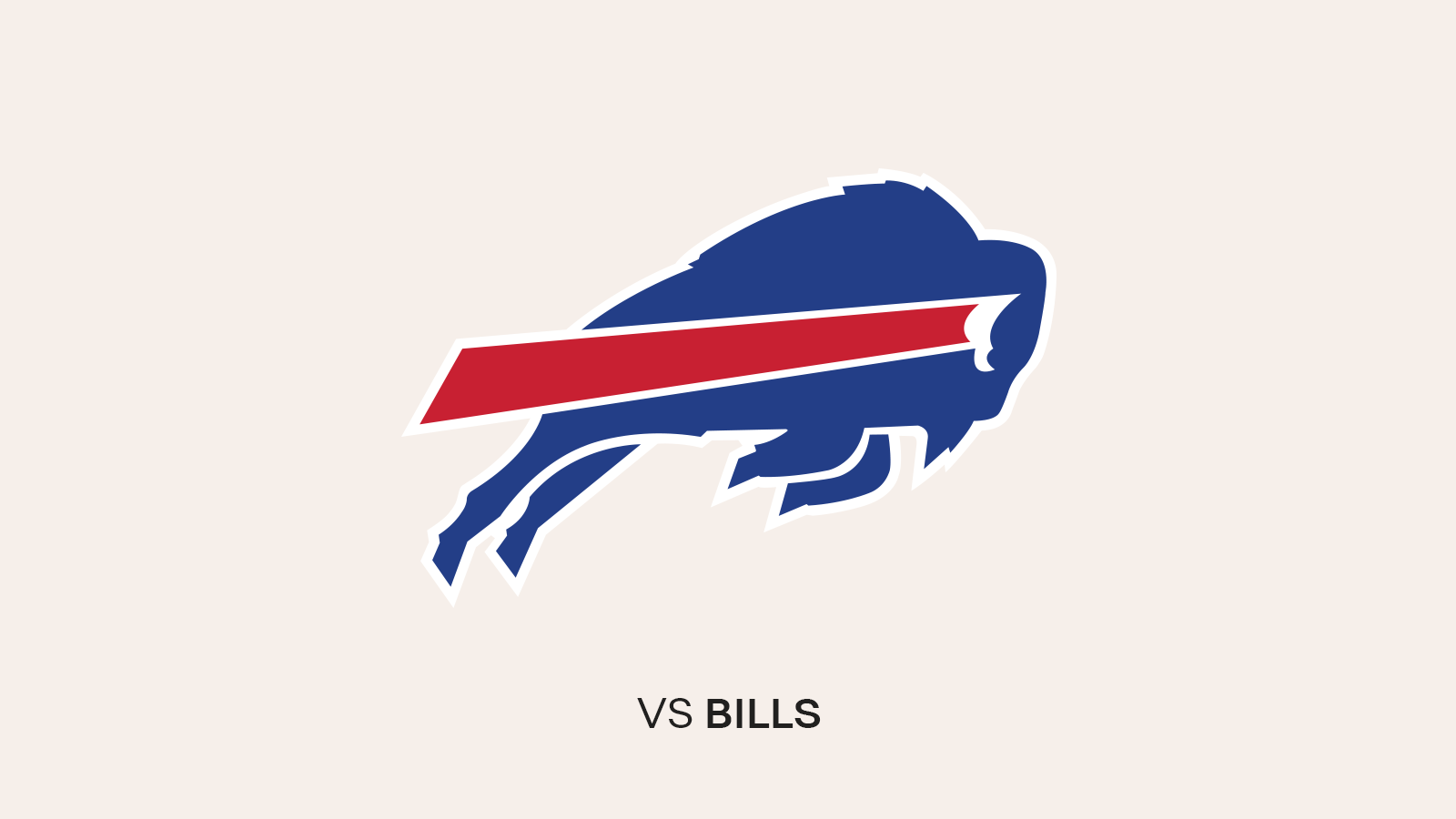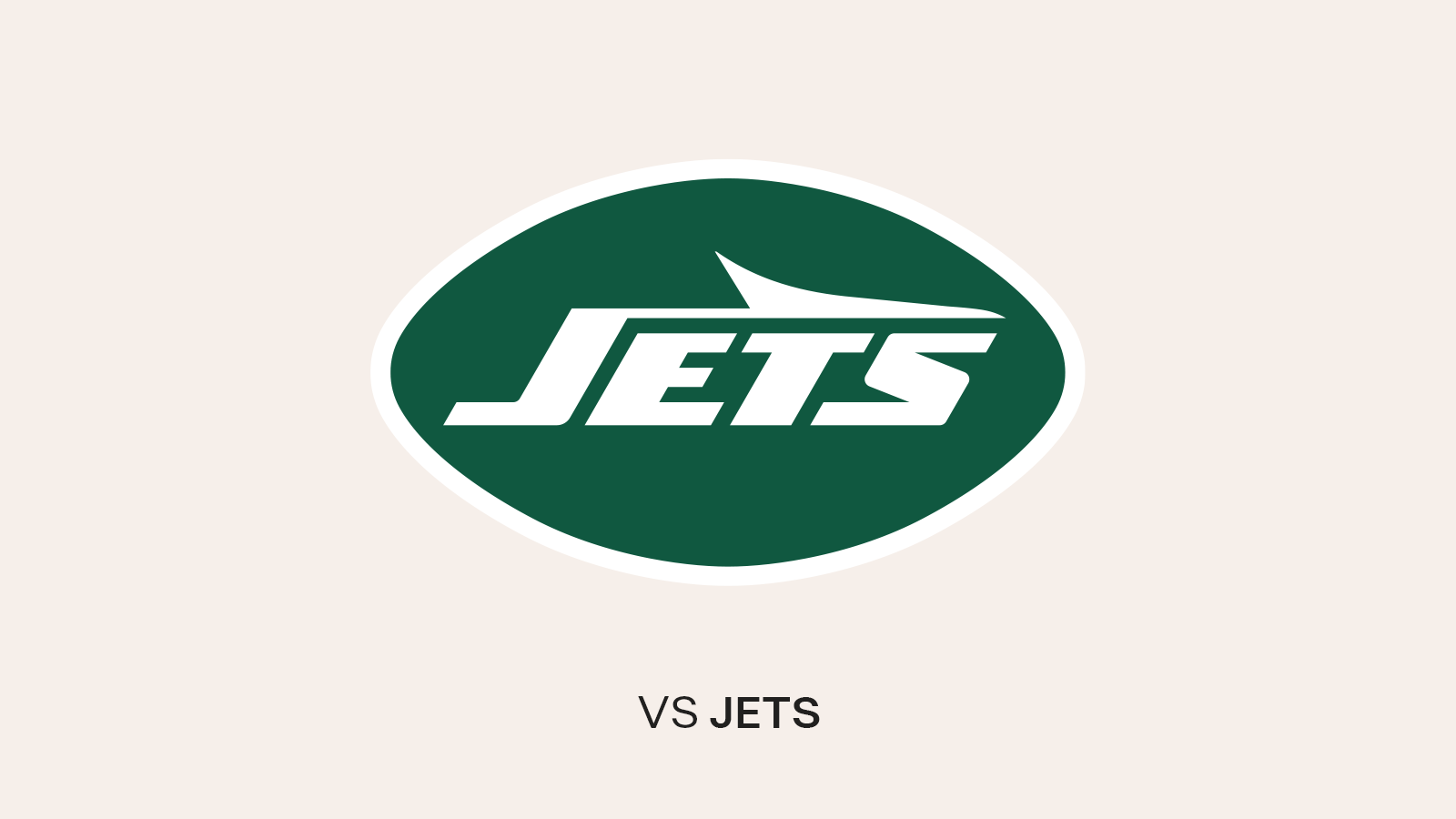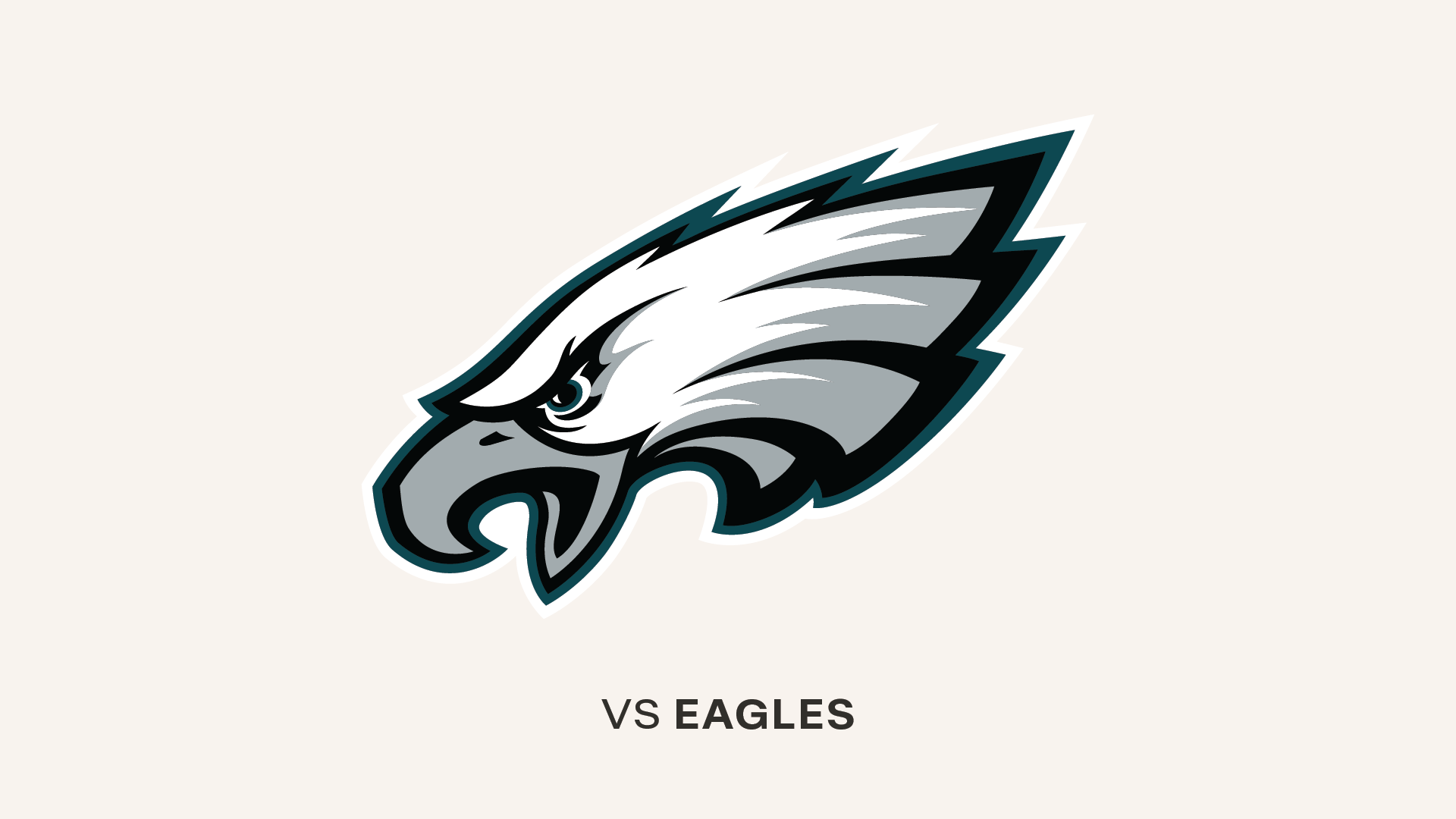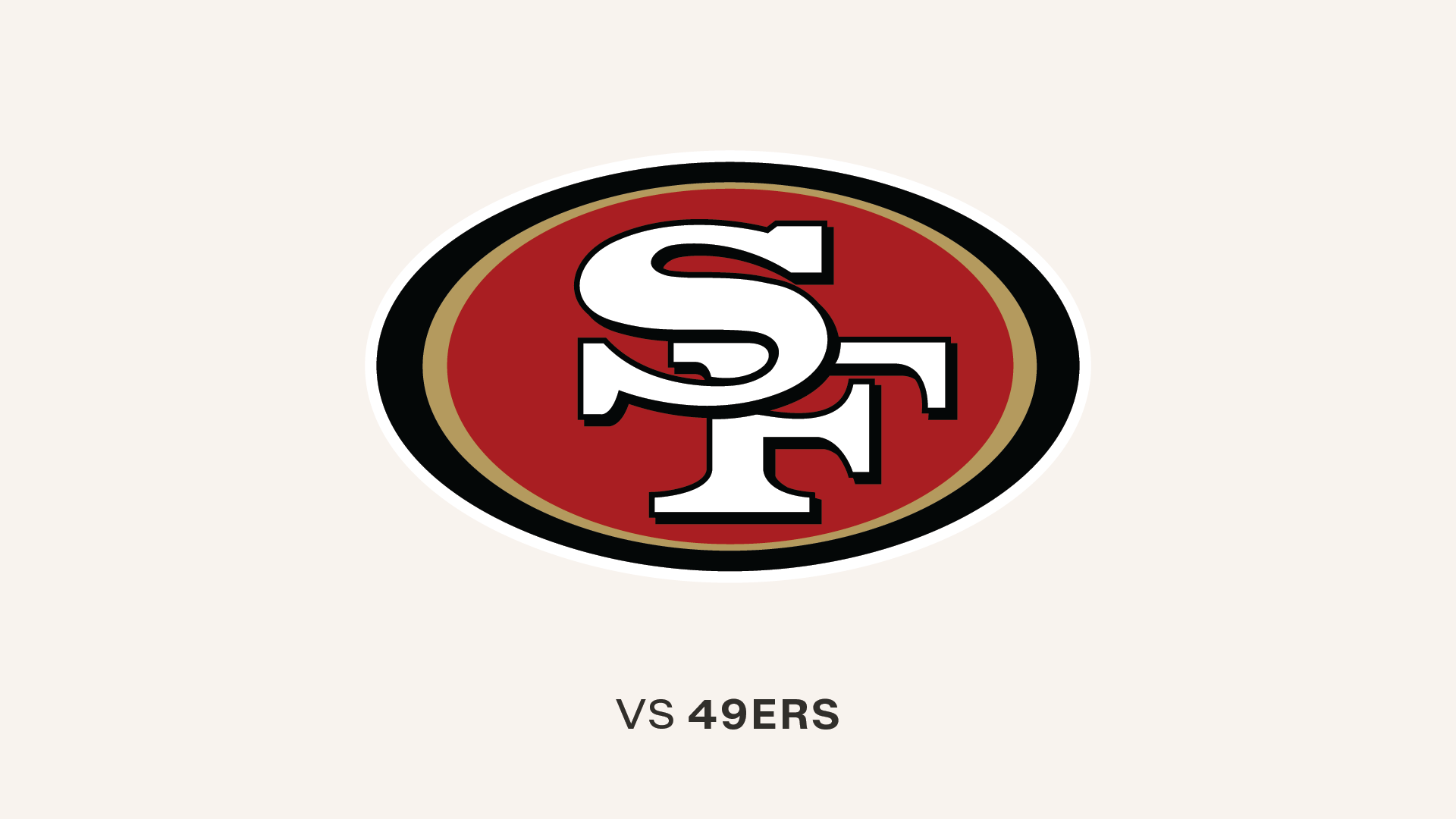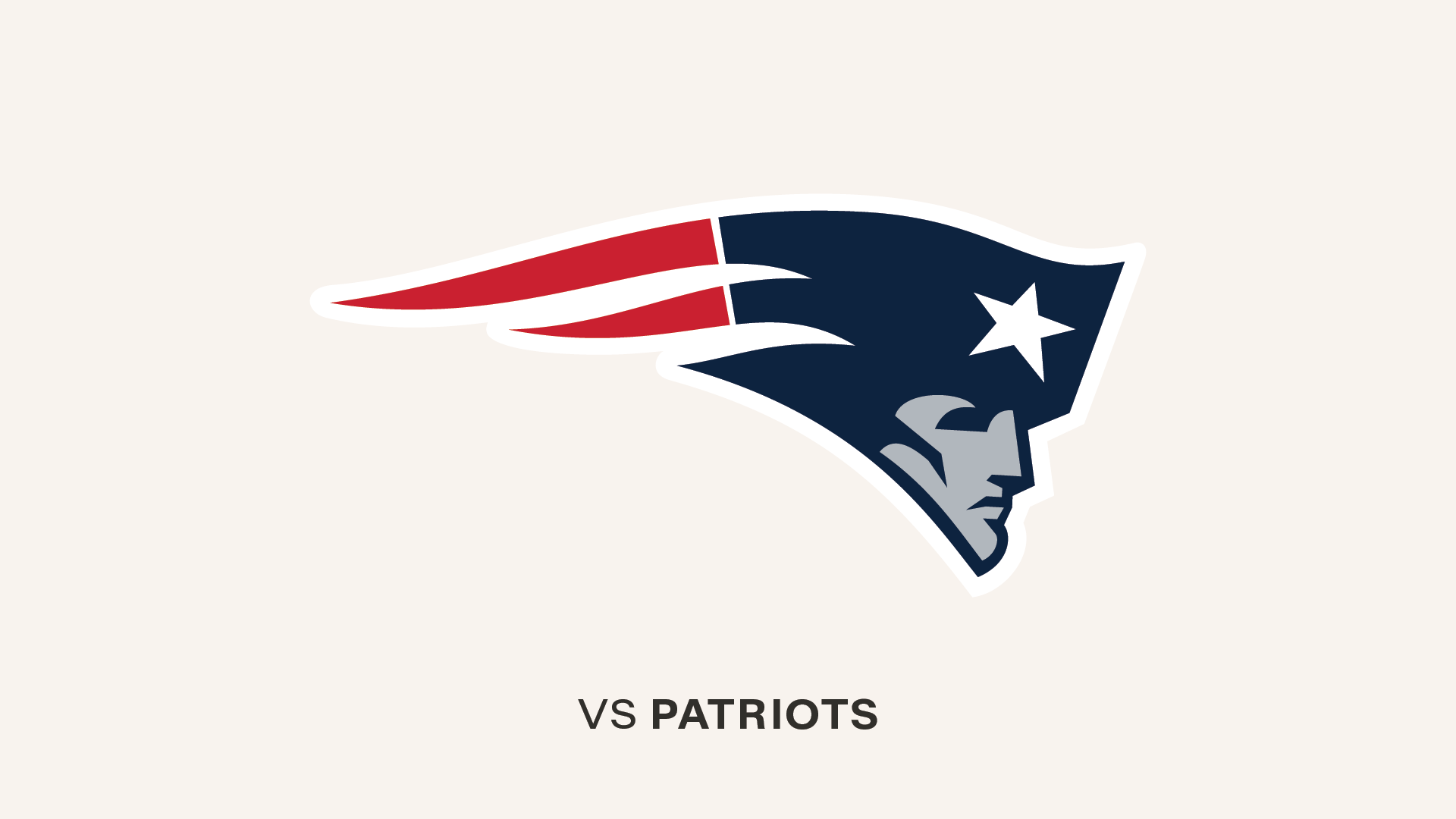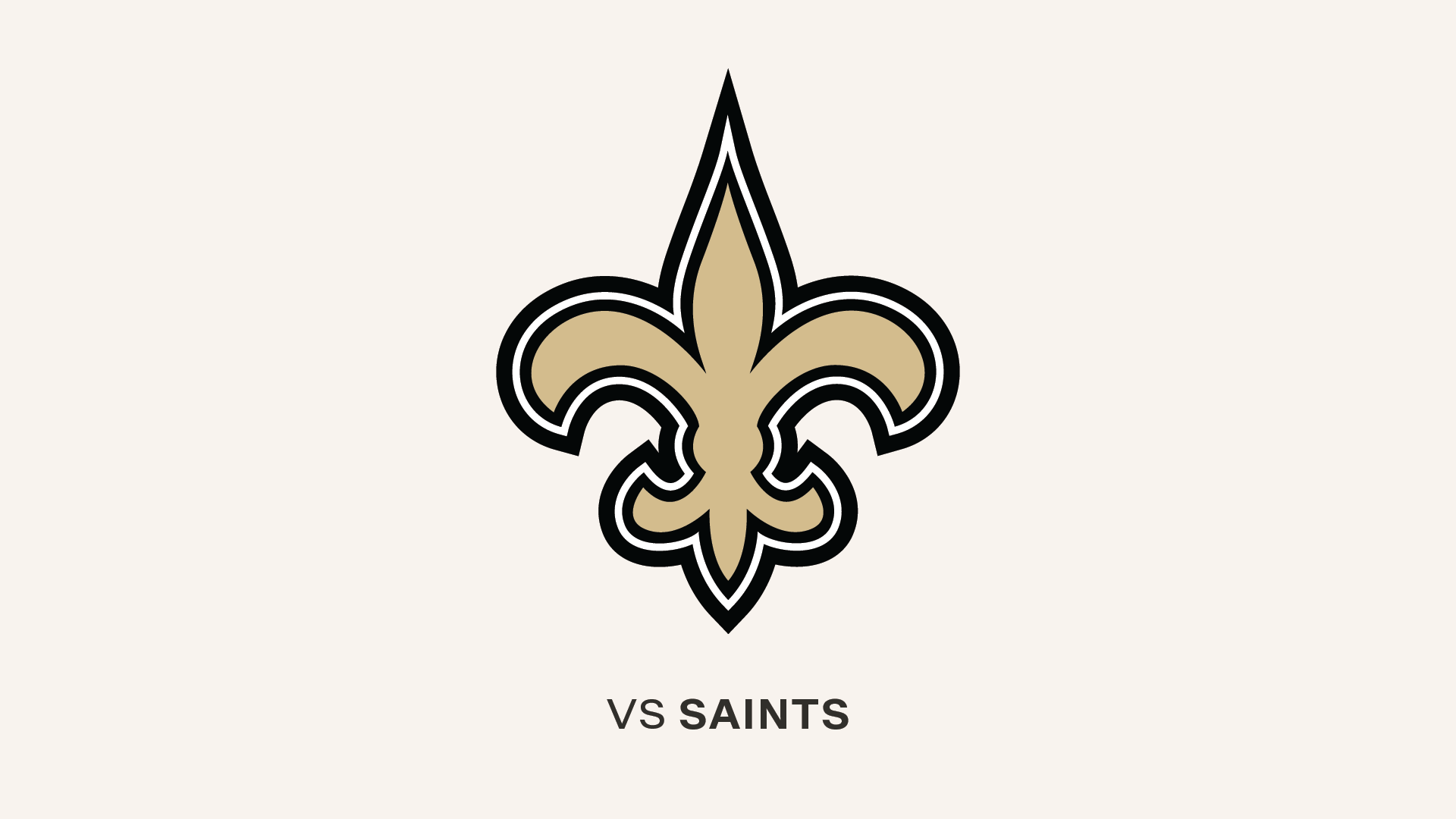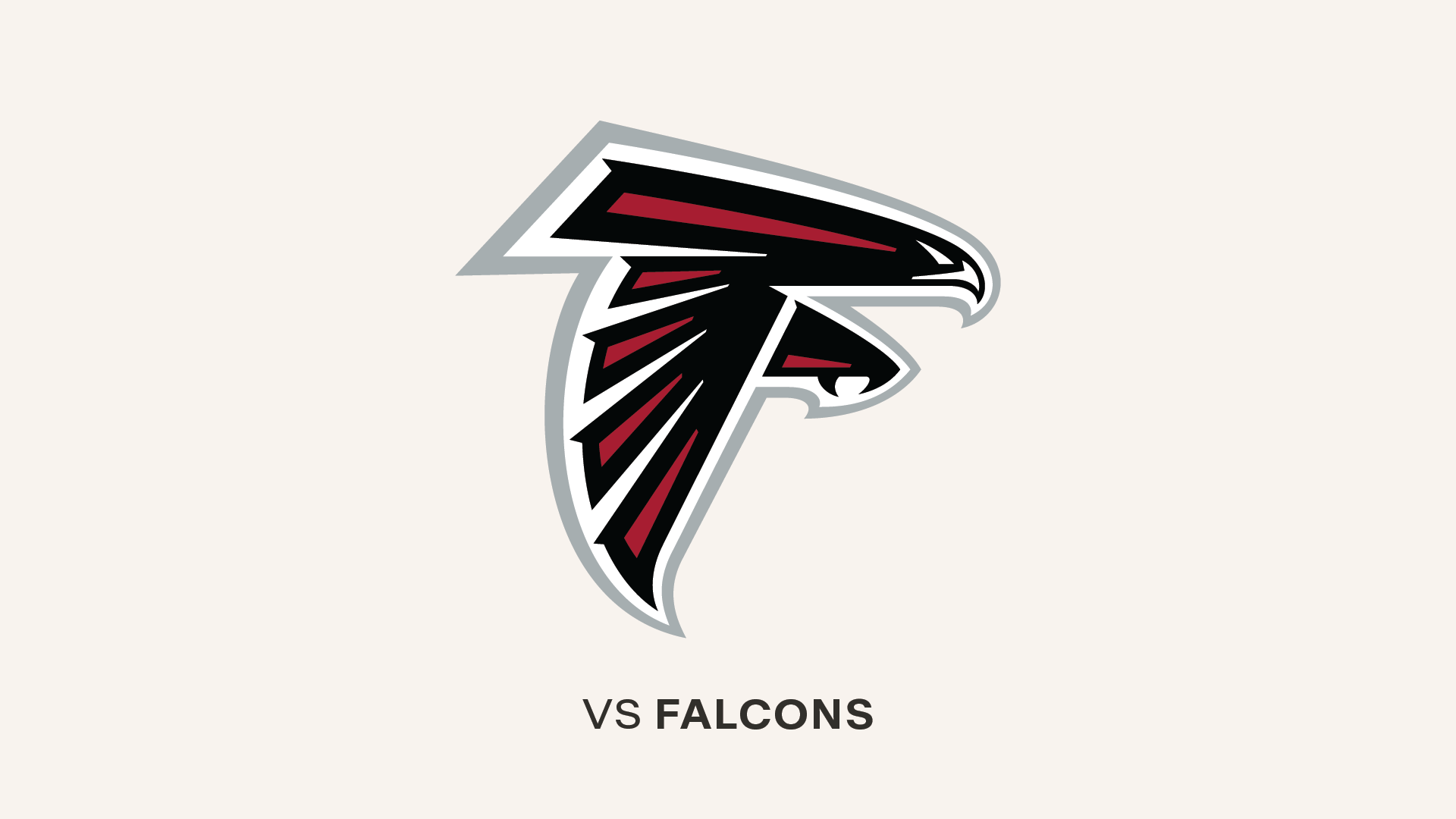So the Tampa Bay Buccaneers opened up their 2011 draft with Iowa defensive end Adrian Clayborn late last month. You may have heard a little bit about that. Obviously, the franchise is hoping to have the sort of first-round success at that position that they had with the first college draft pick in team history, Oklahoma defensive end Lee Roy Selmon.
Or, well, something approaching that level of success, at least. Selmon was the first Buccaneer inducted into the Pro Football Hall of Fame and his name is prominent in the discussion of the greatest player in team annals. So, we'll hold off on putting those sorts of expectations on Clayborn just yet.
Love the pick, though. As it was in 1976, the need to add some life to the pass-rush is great in 2011. The Bucs didn't really surprise anybody by hitting that need; even the second-round selection of another player at the same spot, Clemson's Da'Quan Bowers, felt right. The 1976 Buccaneers took another defensive lineman (slash linebacker) in the second round, too – Selmon's brother Dewey.
You may not have noticed, however, that another move the Buccaneers made on draft day harkened back to the franchise's early years. I'm talking about sixth-round running back Allen Bradford.
Bradford starred at the University of Southern California. In the Bucs' nascent days, former USC Head Coach John McKay liked to bring his former Trojan running backs to Tampa. In fact, in 1976 and 1977, it seemed like he basically imported the entire USC backfield. In just those two seasons, four different Trojan backs played for the Buccaneers: Ricky Bell, Anthony Davis, Rod McNeill and Manfred Moore.
Bell was the only one of those four who was actually drafted by the Buccaneers, but Bradford joins a long line of former USC players selected by Tampa Bay in the NFL Draft. In fact, his first official act as a Buccaneer, if you will, was to protect the Trojans stronghold from the advancement of a group of Gators, simply by being drafted.
That's an extraordinarily silly way of saying that Bradford's selection, one round after the team nabbed University of Florida safety Ahmad Black, kept USC ahead of UF in the all-time rankings of Buccaneer draft selections. Bradford is the 10th Trojan the team has drafted in 36 years; Black had briefly tied Florida with USC at nine draft picks the round before.
Both the Trojans and the Gators must bow to the Tennessee Volunteers, however (I know some UF fans just read that and threw up in their mouths a little bit). The pick of UT tight end Luke Stocker in the fourth round (more on that below) elevates the Vols into a first-place tie with Alabama for the most Buccaneer draft picks ever. Both schools have produced 12 Buc picks, Miami is third with 11 and then USC, Florida State and Oklahoma are next at 10.
By the way, the Bucs made picks this year from three schools that had never before produced a Tampa Bay selection. It probably won't surprise you that Florida International (seventh-round CB Anthony Gaitor) and Idaho (seventh-round TE Daniel Hardy) were two of those three. The Answer Man, however, found it shocking that the Bucs checked off a new school with their very first pick. Before Clayborn, the Bucs had never before picked a player out of Iowa.
(And that's how you pull this thing full circle!)
Iowa was the last remaining Big Ten school that the Buccaneers had not touched in the draft. Wisconsin is the top scorer in that conference with six Tampa Bay draft picks; Illinois is second at six.
But, of course, these are things that you may or may not care about regarding the draft. In contrast, there are draft-related topics I happen to know are of interest to you because you've sent me questions about them. So let's get to those, shall we?
(Before we start: One programming note. I hope you have enjoyed my work in the Answer Man videos this winter and spring. It's been fun for me, though tough to work in such abbreviated form. Anyway, I wanted to let you know that we will be changing the Answer Man video segment from once a week to once every two weeks. It will still be on Thursday. This way, I get enough questions to keep both formats going, and you don't go into Answer Man overload and start calling for my ouster. Look for our next video next week.)
**
- Jo of Tampa Bay asks:
On our Super Bowl team in 2002, how many players were 1st-round selections, 2nd-round selections, 3rd-round selections and so on, and are those numbers comparable to other Super Bowl teams. Are there any patterns?
Answer Man: I gotta be honest, Jo: I immediately liked the concept of this question, but I was also immediately worried about the tedious sort of research that would be necessary. I thought it over and figured the only way I could do this was to find each Super Bowl team's roster and then go down the list to find the original draft status of each player. I don't think there's a list that exists that already has that information.
I like research, I really do. But I don't have unlimited time, especially since this isn't the only question to tackle. I wasn't sure if this was something I could devote an adequate amount of research time, too.
Still, you can see that I decided to include your question, so obviously I came up with some solution. And that solution is: I'll start researching, see how long it's taking and then decide how deep I'm going to go with it.
And what I eventually found was that going back over the last five Super Bowl teams was enough. Trust me on this.
That gave me 10 teams to compare the 2002 Bucs with, and the results were pretty interesting. Any more and it would have been hard for me to get the second chart below to fit. So, see, I was being practical, not lazy. So, let's get to it.
First we're going to have to agree (I will assume that you are somewhere nodding your head in agreement, Jo) that we are only going to consider the 53 players that were on the active roster when the Super Bowl game was played. For instance, that would exclude a player on injured reserve, like Anthony McFarland for the Bucs in '02, or a player on the practice squad, like Mitch White that same year. That may not be completely fair to McFarland, as he did contribute to the Bucs' success that season, but that's the only way to make this analysis possible.
And I believe the purpose of your question is to determine how these players came into the league, not how the Bucs got them. For instance: Joe Jurevicius. The Bucs signed him as a free agent but he came into the league as a second-round pick of the Giants in 1998. He goes down as a second-rounder in the chart.
And you know I love my charts, so let's plop one into the story right here. This is how the Bucs broke down at the time of Super Bowl XXXVII.
|
Draft Status |
No. of Players |
Players |
|
1st Round |
7 |
Derrick Brooks, Lomas Brown, Rickey Dudley, Keyshawn Johnson, Simeon Rice, Warren Sapp, Kenyatta Walker |
|
2nd Round |
6 |
Mike Alstott, Cosey Coleman, Ken Dilger, Joe Jurevicius, Brian Kelly, Shaun King |
|
3rd Round |
8 |
Ronde Barber, Martin Gramatica, John Lynch, Roman Oben, Dwight Smith, Greg Spires, Tom Tupa, Nate Webster |
|
4th Round |
8 |
Reggie Barlow, Jeff Christy, John Howell, Dexter Jackson, Rob Johnson, Michael Pittman, Alshermond Singleton, Todd Washington |
|
5th Round |
1 |
Jermaine Phillips |
|
6th Round |
2 |
Jameel Cook, Ellis Wyms |
|
7th Round |
2 |
Tim Wansley, Ron Warner |
|
8th Round |
0 |
|
|
9th Round |
1 |
Brad Johnson |
|
10th Round |
0 |
|
|
11th Round |
0 |
|
|
12th Round |
1 |
Keenan McCardell |
|
Undrafted |
17 |
Darian Barnes, Ryan Benjamin, DeVone Claybrooks, Casey Crawford, Chartric Darby, Jack Golden, Dan Goodspeed, Cornell Green, Buck Gurley, Corey Ivy, Kerry Jenkins, Shelton Quarles, Justin Smith, Aaron Stecker, Daniel Wilcox, Karl Williams, Todd Yoder |
I'm guessing that, at this point, you're not terribly surprised by that last row there. If you were watching the Bucs very exciting season last fall, you saw how common it is for an undrafted player to not only make it in the NFL but to become a significant contributor. LeGarrette Blount, Earnest Graham, Donald Penn, Derek Hardman – all originally passed over in the draft.
Actually, that list of 17 undrafted players – or almost exactly one third of the Super Bowl roster – is probably pretty representative in how much of a mixed bag it is. You've got three starters (Darby, Jenkins and Quarles), lots of key special teamers (Barnes, Benjamin, Golden, Ivy, Stecker, Williams, Yoder) and a handful of players who provided good depth but didn't see a lot of action (Claybrooks, Crawford, Goodspeed, Green, Gurley, Smith and Wilcox).
On the other hand, five of the seven first-round picks on the list were starters in the Super Bowl (Brooks, Johnson, Rice, Sapp and Walker) and Dudley played extensively as the second tight end. Four of the six second-round picks were starters (Alstott, Coleman, Dilger and Kelly) and Jurevicius played extensively as the third wide receiver. Four of the eight third-round picks were starters (Barber, Lynch, Oben and Spires), Smith and Webster both played extensively on defense and Gramatica and Tupa were essentially starters as the two kickers, if not officially so.
In other words, the Bucs' Super Bowl team got the majority of its starters from the early rounds of a series of drafts, but found significant depth all over the board. And, of course, the starting quarterback was a ninth-round pick, the starting receiver who scored two touchdowns was a 12th-rounder and the Pro Bowl middle linebacker was undrafted.
Now, how does that compare to other Super Bowl rosters. Let's take a close look at the last Super Bowl between Green Bay and Pittsburgh, then break all of the previous 10 SB teams down in a chart.
In terms of roster makeup, the Bucs' 2002 team was a lot like Green Bay this past February, and not so much like the Steelers, at least at the top and bottom. The '02 Bucs had 13 first or second-round players on the roster and 17 undrafted free agents. The '10 Packers had 14 first or second-round players on the roster and 18 undrafted free agents. It's also worth noting that the Bucs' drafted players included a ninth-rounder and a 12th-rounder, and those guys would have been undrafted free agents in the seven-round system that built the 2010 Packers.
The biggest difference between those two teams was in the middle; Tampa Bay had a whopping 16 third or fourth-round players on the roster, but just five from Rounds 5-7. The Packers were the exact reverse – only five from Rounds 3-4 but 16 from Rounds 5-7.
The Steelers had a similar number of first and second-rounders – 15 – but only 12 undrafted free agents. They constructed the bulk of their roster in the drafts middle rounds, with 24 players from Rounds 3-6.
Now let's look at the last 10 Super Bowl teams in handy-dandy chart format. I think this chart is easy to read, but just to clarify, each team has a column that shows how many of its 53 Super Bowl players were taken in each round (including one row for undrafted players). The final column is an average of the number of players taken in each round among those 10 teams. I included that column so you could compare the Bucs' 02 roster with the average. Enjoy!
|
'02 |
'10 |
'10 |
'09 |
'09 |
'08 |
'08 |
'07 |
'07 |
'06 |
'06 | ||
|
Rd. |
TB |
GB |
PIT |
NO |
IND |
PIT |
AZ |
NYG |
NE |
IND |
CHI |
Avg. |
|
1 |
7 |
7 |
9 |
7 |
6 |
9 |
6 |
4 |
11 |
10 |
6 |
7.5 |
|
2 |
6 |
7 |
6 |
6 |
5 |
3 |
8 |
11 |
5 |
3 |
6 |
6.0 |
|
3 |
8 |
3 |
7 |
5 |
3 |
7 |
10 |
6 |
6 |
3 |
8 |
5.8 |
|
4 |
8 |
2 |
7 |
4 |
4 |
9 |
5 |
6 |
4 |
8 |
8 |
5.7 |
|
5 |
1 |
4 |
5 |
6 |
4 |
2 |
6 |
5 |
5 |
2 |
4 |
4.3 |
|
6 |
2 |
8 |
5 |
1 |
5 |
4 |
2 |
3 |
4 |
4 |
7 |
4.3 |
|
7 |
2 |
4 |
2 |
6 |
6 |
3 |
3 |
4 |
2 |
3 |
3 |
3.6 |
|
8 |
0 |
0 |
0 |
0 |
0 |
0 |
0 |
0 |
1 |
0 |
0 |
0.1 |
|
9 |
1 |
0 |
0 |
0 |
0 |
0 |
0 |
0 |
0 |
0 |
0 |
0.0 |
|
10 |
0 |
0 |
0 |
0 |
0 |
0 |
0 |
0 |
0 |
0 |
0 |
0.0 |
|
11 |
0 |
0 |
0 |
0 |
0 |
0 |
0 |
0 |
0 |
0 |
0 |
0.0 |
|
12 |
1 |
0 |
0 |
0 |
1 |
0 |
0 |
0 |
0 |
0 |
0 |
0.1 |
|
UD |
17 |
18 |
12 |
18 |
19 |
16 |
13 |
14 |
15 |
20 |
11 |
15.6 |
Man, I love a pretty chart like that!
You'll see that the Bucs were almost right on par with the first and second-round averages. Just as with the comparison with the 2010 Packers, you'll see that those Bucs were a little heavy on third and fourth-rounders, compared to the average, and a little light on fifth, sixth and seventh-rounders.
One might conclude that this shows some late-round drafting struggles by the Bucs in the four or five years that preceded the 2002 Super Bowl run, and one could certainly make that argument. Here are all of the players that the Bucs drafted in Rounds 5-7 from 1998-2002: DT James Cannida, S Shevin Smith, DE Chance McCarty, DE John McLaughlin, FB Lamarr Glenn, G Robert Hunt, RB Autry Denson, WR Darnell McDonald, TE James Whalen, S David Gibson, QB Joe Hamilton, G Russ Hochstein, FB Jameel Cook, DE Ellis Wyms, TE Dauntae' Finger, S Than Merrill, DE Joe Tafoya, S Jermaine Phillips, DE John Stamper, CB Tim Wansley, TE Tracey Wistrom, WR Aaron Lockett and C Zack Quaccia. Four players from that list were on the 53-man roster for the Super Bowl: Cook, Wyms, Phillips and Wansley.
But I don't think it's as simple as that. Remember, these are not just the Bucs' fifth, sixth and seventh-rounders. We're counting the players on the roster who were drafted in the seventh round, no matter who did the original drafting. For instance, Green Bay's 2010 team had eight sixth-rounders on the Super Bowl roster, but two of those eight were picked by other teams – LB Erik Walden and DT Howard Green. Two of the six seventh-rounders that were on New Orleans' Super Bowl roster in 2009 started out in other organizations.
My point is, a roster can have a lot of late-round players on it even if that team didn't hit on a lot of its own late-round picks. That just didn't happen to be the case with the 2002 Buccaneers. That team was just loaded with third and fourth-rounders, eight of which it had drafted and eight of which it had imported.
The Bucs' 17 undrafted free agents is pretty close to the league average for the past 10 Super Bowl teams. If you throw the two post-seventh-round draft picks into the undrafted pool, the average goes up to 15.8.
A couple of interesting notes (at least to me) from that chart…
The 2007 New York Giants, who were crazy underdogs going into that game against the 18-0 New England Patriots, had the fewest first-rounders on their Super Bowl roster, with just four. (It helped that Jeremy Shockey was on injured reserve.) Those '07 Patriots had the most, with 11.
The 2006 Indianapolis Colts were really top and bottom-heavy. They had 10 first-rounders, almost matching the '07 Pats, but they also had 20 undrafted free agents, the most of any team on this list. The team with the fewest undrafted free agents was their opponent in that Super Bowl, the 2006 Chicago Bears.
All 11 teams on the list, including the 2002 Buccaneers, had at least one player on the 53-man roster from every round (1-7) and from the undrafted pool. I'm a little surprised there wasn't a zero in there somewhere. The Bucs came closest with just one fifth-rounder (then-rookie Jermaine Phillips). The 2009 New Orleans Saints had only one sixth-rounder (OL Nick Leckey).
I wrote down the names of each player in each round when I was putting the numbers together. There are a couple of other interesting little tidbits I noticed from the list. For instance…
You know that deep and effective receiving corps for the Packers that everybody was going nuts about during the playoffs last year (and for good reason)? Not a first-rounder in the bunch. There were two seventh-rounders, in the ageless Donald Driver and the little-used but well-coiffed Brett Swain, but most of that unit was built in the second and third rounds: Greg Jennings (2nd), Jordy Nelson (2nd) and James Jones (3rd). There is receiver value in those rounds, my friends, as the Bucs believe they will prove again with Arrelious Benn. Let me flip a few names at you from the last four drafts before 2011: Jordan Shipley, Mike Wallace, Eddie Royal, DeSean Jackson, Sidney Rice, Steve Smith (of the Giants). And those are just the highlights; there are quite a few more useful and still-emerging receivers I could have added to the list.
The New Orleans Saints just took a running back in the first round, Alabama's Mark Ingram. Given their success on the waiver wire, that seems a bit surprising. The 2009 Saints Super Bowl team had five running backs on the roster, and four of them were undrafted players (the other was Reggie Bush). These weren't just roster fillers, either. Pierre Thomas led the team in rushing with 793 yards and Mike Bell was second with 654. Lynell Hamilton was even good for 125 yards.
The 2008 Arizona Cardinals featured a former first-round pick on the roster at the marquee positions of quarterback and running back. Of course, it was an undrafted free agent who actually started at quarterback (Kurt Warner) and a fifth-round pick that led the team in combined rushing and receiving yards (Tim Hightower). The first-rounders were Matt Leinart and Edgerrin James.
The 2007 Giants really made good use of the second round in the years leading up to their championship. Of the teams on the list, they had the most second-rounders, with 11, and these were core players. Seven of them started the Super Bowl: G Chris Snee, WR Amani Toomer, DEs Michael Strahan and Osi Umenyiora, DT Fred Robbins, LB Kawika Mitchell and CB Corey Webster.
I could go on…oh wait, I already did. I just had to give this one a long answer to justify the hours of tedious research, but I think it's time to move on now.
**
- Ted Glaspey of Ocala, Florida asks:
Why two tight ends?
Answer Man: I assume you mean, why did the Buccaneers draft two tight ends in April?
You know, our Twitter guy apparently got a lot of that question during draft weekend, or variations upon it, and I honestly don't understand the consternation. I guess I would if the Bucs had opened the draft tight end-tight end, or even used second and fourth-round picks on the position. But we're talking a fourth and a seventh-rounder here, folks.
Now, I don't think there was much negative feedback about the fourth-round selection of Tennessee tight end Luke Stocker. Analysts immediately called that a high-value pick and GM Mark Dominik explained pretty thoroughly why the Bucs made that pick. Tampa Bay's staff believes that the pairing of Stocker with dynamic tight end Kellen Winslow will allow the offense to do a lot more, and be much less predictable, with its two-TE sets. I believe an all-around blocking/receiving tight end, and in particular Stocker, was something and someone the Buccaneers seriously targeted going into the draft.
I don't think there were any specific complaints about Idaho's Daniel Hardy, either. It wasn't the player that surprised some fans, like Ted here, but the fact that another pick was used on a tight end in the same draft.
But, again, we're talking a seventh-rounder. The implication is that by doubling up at one position, the Buccaneers lost the chance to shore up the roster at another position. However, apart from the general idea of getting good special teams players, I don't think many teams view the seventh round as a place to address major roster issues. That's just my opinion. I think at that point in the draft teams are picking up the best players left on their boards, because in the long run every spot on the depth chart is always in need of more talent. Had there been a defensive end the Bucs felt was fifth-round value still sitting on the board when the Bucs picked 238th, where they got Hardy, I feel pretty confident they would have taken that player, regardless of the first and second-round choices of Adrian Clayborn and Da'Quan Bowers.
Hardy missed five games last year due to an injury (that is now healed) and that served to keep his numbers down a little bit, even though they were still quite good (32 catches for 545 yards). He has good speed and very good hands and is the kind of interesting prospect teams like to pick up in the very late going. And he can play special teams, which again is something the Bucs focus on in the sixth and seventh stanzas. Dominik believes focusing on special teams ability at that spot in the draft is a big part of the reason the Bucs have hit on so many seventh-rounders in the past two years.
I suspect the Buccaneers saw Hardy as a player that could have gone a round or two earlier in the draft, and really liked the value at that spot. Look at it this way: It is almost certain that, as the draft was winding down, there were 10 or 12 players left on the Buccaneers' draft board that they had significant interest in. In most years, the Bucs would have drafted one of those 12 players and then, as soon as the seventh round ended, gotten on the phone to the other 11 and tried hard to convince them to come to Tampa as undrafted free agents. Eventually, they will get the chance to do just that with the players who didn't get drafted.
So let's say there were 12 names of interest on that board and the Buccaneers are eventually able to get – oh, I don't know – eight of them to come to Tampa. (Given how much of an opportunity the Bucs have given undrafted players in the last two years, to great effect, you would think a lot of players in that circumstance would find this to be an ideal destination.) One of those eight came through the draft, seven through free agency. Let's say those eight included a tight end, a running back, a cornerback, a punter, a long-snapper, a guard, a tackle and a linebacker. In the end, does it really matter that the tight end was a draft pick and the others were signed afterward? The only difference is that the Bucs guaranteed themselves the first crack at Hardy, whereas they'll have to compete for the other players on their list. If Hardy was the highest-rated player on that list, the pick makes total sense, even with the earlier pick of Stocker.
The Bucs usually take at least five ends to training camp, occasionally one or two more. Of the five tight ends the team had at some point last season, only three are now under contract. Jerramy Stevens was released and John Gilmore is a pending free agent. The draft gives the Bucs five to take into camp: Winslow, Stocker, Hardy, Ryan Purvis and Nathan Overbay. Both Purvis and Overbay were originally undrafted free agents who are still working to nail down a more permanent spot on the roster. They will get another opportunity to do so this year, in competition with Hardy.
**
- Donald Long of Columbus, Georgia asks:
How many interceptions did Tampa Bay get in the 2002 season?
Answer Man: This is the type of question that, lately, I've been thinking about not including because, it seems to me, it would take less time to look this up on line than it would to send in the question. However, I keep finding excuses to include them (and no, I'm not paid by the word), and this is just such an occasion.
See, by answering this question, I can reprint my all-time favorite Buccaneers statistic. The answer to your question, which I can actually access in my own brain and therefore don't need the internet, is 31. Tampa Bay's defense produced an NFL-best 31 interceptions in 2002. What's more, the Bucs surrendered just 10 TD passes that season, also the best mark in the league. Those two numbers helped produce that awesome stat I mentioned: In 2002, all of the Buccaneer opponents combined for a passer rating of 48.4 on 510 attempts.
48.4! The next best mark in the league that year was 68.7…not even close. Do you know what Ryan Leaf's career passer rating was? 50.0! And that was on 655 attempts, which is pretty close to the same number as what the Bucs faced in 2002. I've used this line before, but the Buccaneers' 2002 defense essentially turned their entire schedule of opposing quarterbacks into Ryan Leaf.
Now, if you look up the best single-season passer rating marks ever allowed by an NFL defense, you won't even find Tampa Bay in the top 100. Of course, of those top 100, 91 of them occurred before 1960, 94 of them occurred before 1970 and 99 of them occurred before 1980.
Obviously, the game has changed a lot since before the 1970 AFL-NFL merger, and I'd even go so far as to say the games is significantly more pass-oriented now than it was in the 1970s. So if you're comparing what the Buccaneers' pass defense did in 2002 to its contemporary peers, you'll only find three seasons that were better. You'd also noticed that, of the top 10, Tampa Bay's '02 season is the only one more recent than 1991.
Top 10 Single-Season Opponent Passer Ratings, Team, Since 1980
|
Team |
Season |
Opp. Passer Rating |
|
Minnesota |
1988 |
41.2 |
|
Miami |
1982 |
44.9 |
|
Washington |
1980 |
47.8 |
|
Tampa Bay |
2002 |
48.4 |
|
Chicago |
1986 |
49.9 |
|
Buffalo |
1982 |
50.9 |
|
Chicago |
1985 |
51.2 |
|
Dallas |
1981 |
51.8 |
|
Philadelphia |
1991 |
52.1 |
|
San Francisco |
1987 |
53.8 |
So, like I said, to answer your question…wait, where was I? What was your question again? Oh, how many interceptions in 2002. Right. Well, I got a little carried away. Again, the answer is 31. You're welcome.
(By the way, I'm not obsessed with the '02 Super Bowl team. These are just the questions I'm getting!)
(Okay, maybe I'm a little obsessed.)
**
- Alanzo Palmer of Fort Myers, Florida asks:
I've been a fan of the Bucs for as long as I remember and I was concerned about two questions. In the history of the mock draft how many times did the sports analysts of ESPN and NFL Network "correctly" predict the Bucs' draft and was Josh Freeman one of the correct choices by any sports personnel? Also how many players have played for us that are on or have been on the roster from Florida and what state has had the most players to play for us? Sorry about the long question just thought I'd try and shake you up a bit. You're a beast with all of our questions. Hope you can end my suffering. Thank You and may God Bless.
Answer Man: I slipped a non-draft question in on you there, but now we're back to the number-one topic for this time of the year.
This question is like the one from Jo up there in that I liked it right out of the box but I worried that I wouldn't have a reliable way of finding the necessary information. That's a legitimate worry here – Alanzo wants to know about predictions made by ESPN and NFL Network analysts, and I don't think I have a way to track through the years what they've said on camera. And, really, it's not like an expert on one of those channels is going to make just one prediction for each team. Mock drafts flow like glass, only if glass actually did flow and that wasn't just an interesting but non-fact-based bit of bad trivia.
But, the thing is, most of the people who are going to make draft predictions on one of the major networks are analysts-for-hire who also put their mock drafts down on paper (and then get a techie to put that information on a web site). And those we do have some records of. In fact, Buccaneers.com has made a habit of running down the various mock drafts in the weeks leading up to each year's real thing. We can just skip back through the archives and take a little tally. Shall we, Alanzo? We shall!
Let's go year by year, as far back as we can.
In 2011, we looked at 20 different mock drafts from reputable sources (I'm going to say "we" for all of these to make it seem like I was involved in that research.) Of those 20, exactly one correctly picked the Bucs' first-round selection of Adrian Clayborn: NFL.com's Brian Baldinger. It's worth noting that another 10 of the analysts predicted Da'Quan Bowers, who later also became a Buc in the second round.
In 2010…well, we skipped the mock draft roundup last year because, frankly, there wasn't enough mystery to it. The Bucs were picking third and everyone was reasonably sure the St. Louis Rams were going to take quarterback Sam Bradford. You would have been hard-pressed to find an analyst that didn't give the Bucs one of the two top defensive tackles, Gerald McCoy and Ndamukong Suh.
In 2009, the Buccaneers surely knew they wanted quarterback Josh Freeman going into the draft, and they eventually traded up from #19 to #17 to make sure that happened. The analysts never got a true read on how much the team wanted the Kansas State passer. We looked at 16 mock drafts that year and only three of them correctly predicted the Freeman choice: ESPN's Mel Kiper and two guys from CBSSports.com, Chad Reuter and Clark Judge. The most common prediction was Mississippi DT Peria Jerry, who eventually was taken by Atlanta in the first round.
In 2008, the Bucs were picking 20th and we found 15 mock drafts to analyze. The most popular prediction was Michigan State wide receiver Devin Thomas, the choice on three of the 15. In case you're wondering, Kiper predicted USF cornerback Mike Jenkins. His ESPN foil, Todd McShay, was the only one of the 15 to correctly predict the Bucs would take Aqib Talib.
In 2007, we rounded up 12 mocks (notice how the numbers kept going up each year) and the results were surprising considering the Bucs had the fourth overall selection. You would think that would be an easier prediction, but not one of the 12 correctly guessed that Tampa Bay would take Clemson defensive end Gaines Adams. Instead, eight of the 12 paired the Bucs with Georgia Tech wide receiver Calvin Johnson. You call me a "beast," Alanzo? Calvin Johnson is a beast. I don't think it's a stretch to think the Bucs would have happily jumped on the Megatron train had he been available, but Detroit foiled that by taking him second overall. Of the four analysts among the dozen who didn't give us Megatron, all had believed he would already be off the board. Those four came up with some retroactively hilarious alternatives for the Bucs: Brady Quinn, JaMarcus Russell and Joe Thomas. Okay, Thomas isn't hilarious; he's darn good. But Russell went first overall and now ranks as one of the greatest draft busts ever, while Quinn fell all the way to pick #22. Let's see, JaMarcus Russell, Brady Quinn or Josh Freeman? Dodged that bullet.
In 2006, there were also 12 mock drafts in the study but they couldn't come to any consensus at all. Certainly, no one predicted the Bucs' interest at #23 in future Pro Bowl guard Davin Joseph. There were seven different guesses, in fact, with Florida State cornerback Antonio Cromartie and Auburn tackle Marcus McNeill each the choice for three analysts. Two others said Santonio Holmes, who was still on the board when the Bucs picked (but gone two spots later). Cromartie went four picks before the Bucs but McNeill lasted until #50.
We skipped 2005 also, presumably because the fifth pick wasn't difficult to predict. The 2006 story did mention that most analysts had paired the Bucs correctly with Cadillac Williams the year before, since everyone knew the 49ers were taking QB Alex Smith and then there were three highly-rated running backs expected to go. The Bucs were in need of a back and had not-too-subtly fallen in love with Williams will coaching the Senior Bowl.
In 2004, we apparently set that original number at 12, looking at a dozen mock drafts to see what could be gleaned. The lesson that year was that it was better to be close to the scene. The only one of the 12 mocks that correctly predicted the Bucs' selection of LSU wide receiver was TBO.com, the Tampa Tribune's site (no specific author was cited). A year before the Bucs got Caddy, three of the 12 predictors had them taking the future Rams back, Steven Jackson. Two others predicted wide receiver Reggie Williams.
By the way, in looking up that 2004 story, I actually found the old spreadsheet that showed all 12 analysts picks for the entire first round. The most anybody got right was six. Six! Two of the 12 got the first pick right – and since that was Eli Manning to the San Diego Chargers, it was only about an hour before he was traded to the New York Giants – and then none of the other 31. I bring that up only because I don't want this answer to look like a rip job. As even the TV analysts are pointing out regularly these days, mock drafts rarely get many of the picks exactly right because there is so much uncertainty. I'm sure many of the predictions look great on paper, but it only takes one surprising selection – say Jake Locker at #8 overall this year – for everything to get thrown out of whack. Once a mock draft gets a little bit of a wobble, it's not long before it is careening over the embankment.
That's as far back as our mock draft experiments go here on Buccaneers.com, partially because we didn't have a first-round pick in 2002 or 2003. We did look at 12 mock drafts in '03, and four of those 12 did include a second-round prediction for the Buccaneers, but none were right.
I didn't have any concerns about your second question, Alanzo. That one was easy and as you may have noticed, I discussed that subject a little bit in my intro. The way I read it, you're asking about players from Florida colleges. If you mean their actual hometowns, I'm not going to be able to help you there.
And the answer is…oh, my. Can I get a record-needle-scratch sound effect here? I just realized I researched the wrong question. You asked about states that have produced the most Buccaneer players and I just researched states that produced the most Buccaneer draft picks. Worse, I don't have time to go back right now. So, here's my pledge to you, Alanzo. I'll give you the info I just looked up, and in my next column I'll answer the question the way you have it worded. In fact, if possible, I'll figure out the state that has produced the most Bucs in terms of their hometowns. No promises on that part.
The state that has produced the most Buccaneer draft picks is not, surprisingly, Florida but Texas. It is not at all shocking that the top three are Texas, Florida and California in that order. Florida's up there with 33 because of the Big Three – 30 of those 33 are from UF, FSU or the U. Contrastingly, California and especially Texas smother us with the sheer number of schools. Texas has 35 Buc draft picks from 12 different schools! California has produced 32 Buccaneer draft picks.
By the way, the Bucs have drafted a collegian from 42 of the nation's 50 states. The only eight states that have not had a college produce a Buccaneer draft pick are Alaska, Delaware, Maine, Montana, Rhode Island, South Dakota, Vermont and Wyoming. What, no Black Bears or Blue Hens? Let's get on that!
**
- Caleb of Tempe, Arizona asks:
Dear our beloved Answer Man. Though residing in a different state, I've followed the Bucs since Shaun King was taking the snaps. I've always enjoyed reading your answer column and finally have a question I can't seem to solve myself. Can the undisputed champion of Buccaneer trivia be so king to lend his majestic services to an avid reader? (No. That is not the question Answer Man.) HA! Yeah, know you too well. What is the name of the pirate ship located in Buccaneer Cove? Every ship has a name.. but I can't seem to find this one! If for some reason this ship is unnamed, my suggestion would be to have fans send in suggestions or do a contest! (Clears throat) FIRE THOSE CANNONS!!!
Answer Man: I won't tell Gene Deckerhoff you're trying to steal his job if you promise not to be too disappointed by this answer. (And, yeah, you do know me too well. I definitely would have pulled the old genie-in-the-bottle trick on you with that first "question" if you hadn't preempted me.)
See, the pirate ship in Buccaneer Cove is known as…wait for it…The Pirate Ship in Buccaneer Cove.
That's all it's ever been called. You were hoping for the S.S. Skin-The-Panthers, maybe?
I like your initiative but I can't officially authorize a naming contest or tell you there is any likelihood a specific name will be adopted. However, I do think it would be fun to see what you all can come up with. If you want to follow Caleb's suggestion here and send in some ship-naming ideas, I'll look them over. If there are enough to make it fun/worthwhile, I'll print them in the next column.
**
Okay, I'm going to stick with my new shorter format this week (if you can call 7,000 words "short"), even though I still have several good questions I need to get to eventually, including one from the faithful and clever Jake of Ishpeming. I'll get to that one in my next column, as well as the one I promised above. I also have one queued up from a Cassidy on the Elgin Air Force Base that I'm still pondering how to approach. Cassidy's question is a bit open-ended, and that's the trouble, but essentially I've been asked to assign some retroactive grades to draft classes of the past, ours and others. Not sure if I can make that work, but I'm thinking it over.
Also some of you are asking about FanFest and Throwback Game dates. Stay tuned on those…I'll get that information to you as soon as possible.
I don't really have any of the usual 'Quickies' to finish up with, but a fan named Skylar in Largo wanted to know what team Tim Crowder was with before he joined the Buccaneers. The answer is the Denver Broncos, who drafted Crowder in the second round in 2007.
Okay, adios everyone. If I didn't get to your question yet, please bear with me. And remember that next week I'll be back on video, so you may find your answer there.




















